Tres Leches Cake: The Génoise
I thought about just referring all you prospective tres leches cake makers to the basic génoise tutorial and saying: just add nuts! However the process for tres leches génoise is slightly more involved than that. My solution: to create a new tutorial that mixes old and new photographs. What? It’s not like my lighting or framing is ever consistent anyway. You’ll deal!
The first step is to prepare your pan, then preheat your oven to 400 degrees Fahrenheit. Lay your almonds out on a sheet pan and bake them for about ten minutes until they’re only lightly toasted. About like so:

Cool them for a few minutes, then pour them into the bowl of your food processor and grind them finely:
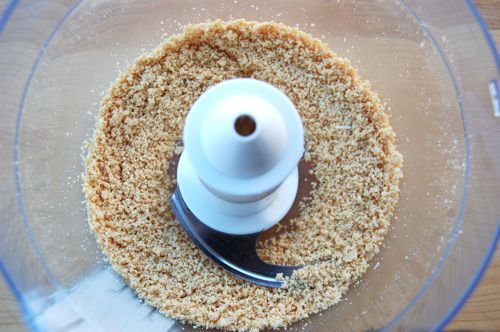
Sift your flour…
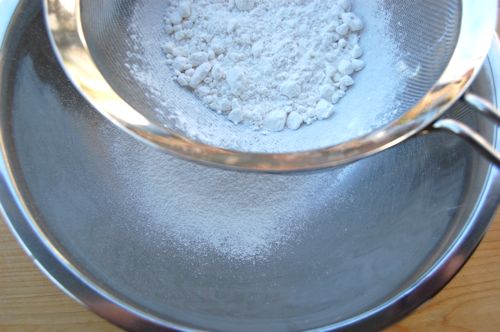
…and add it to the food processor along with the salt…
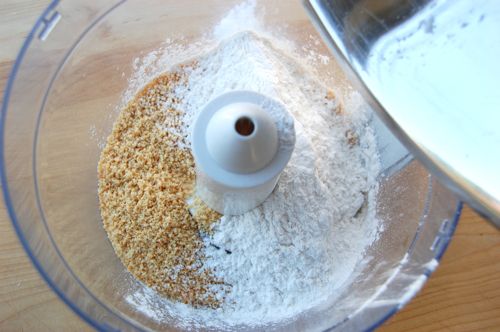
…and your orange zest. This stuff:
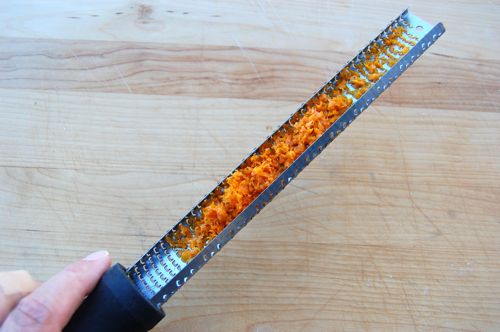
Yes, I forgot to take a picture of myself adding this in. Cut me some slack, I’d stayed up late watching movies and drinking wine with the missus the night before. I was feeling a little rough. So where was I? Oh yes, the food processor. Process everything for about ten seconds until it’s all well blended. Like so:
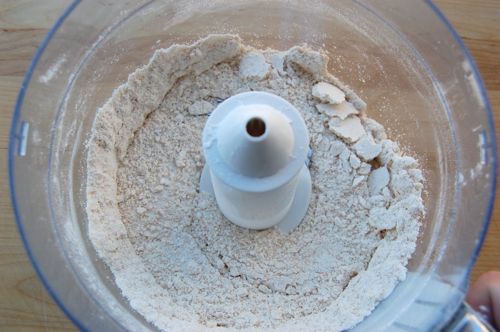
Now turn your attention to the egg whites and sugar. You’ll want to find a saucepan that will comfortably fit your mixer bowl, like so:
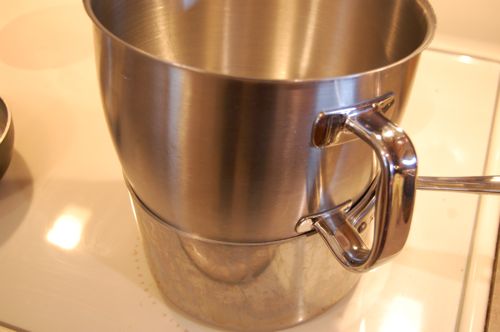
Take the bowl off the saucepan, put about an inch of water in it, and set it to simmer. Off the stove top, add your sugar and eggs to the mixer bowl…
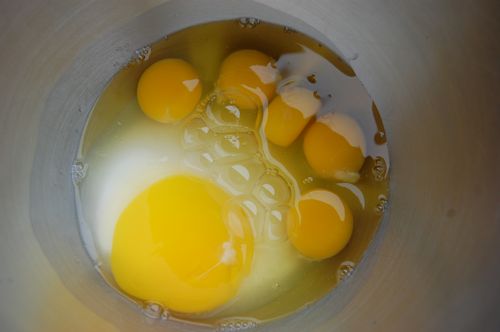
…and give them a good whisking.

Put the bowl over the simmering water and continue to whisk until the sugar is dissolved that the mixture is warm to the touch (no more than 120 degrees F).

Take the bowl off the simmering water and attach it to the mixer, onto which the paddle has been affixed. Beat on medium-high for roughly 8 minutes, until the mixture is extremely foamy. A thick ribbon should fall off the beater (I failed to capture it in this photo) and the small heaps of foam the falling ribbon creates should last for several seconds (I did manage to capture those).
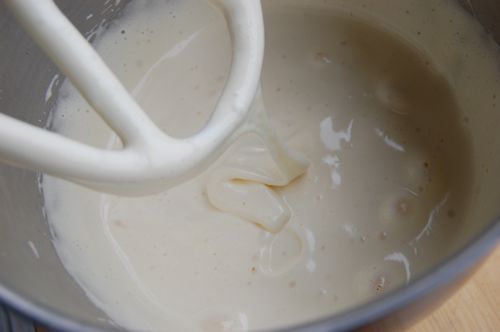
Now is also good time to add the vanilla. Beat the mixture for about 10 seconds more.
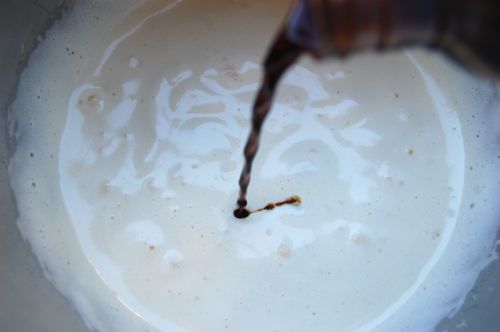
Take about a cup of the foam and stir it into your melted (ideally clarified) butter. This will help the butter to more readily incorporate into the main volume of the batter.
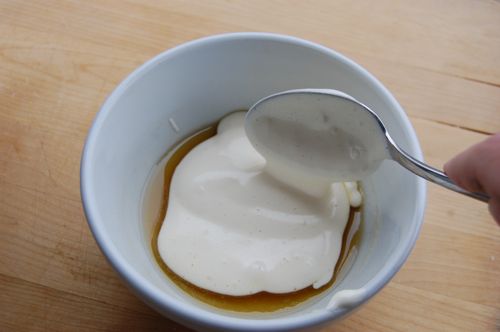
Stir until it looks about like so (no need to be gentle):

And gently pour the mixture back into the mixer bowl…

Sprinkle the flour and almond mixture onto the foam all at once…
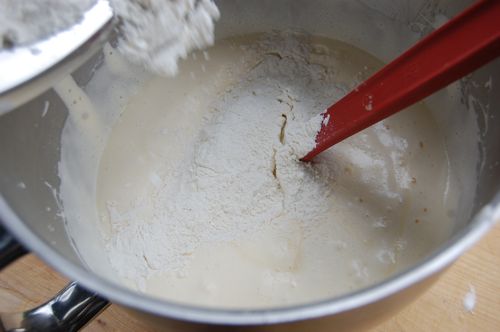
…and using your largest rubber scraper or spatula, fold until the mixture is uniform (instructions on how to fold properly are under the Techniques” menu to the right). 30 seconds or so later, your batter should look like this:
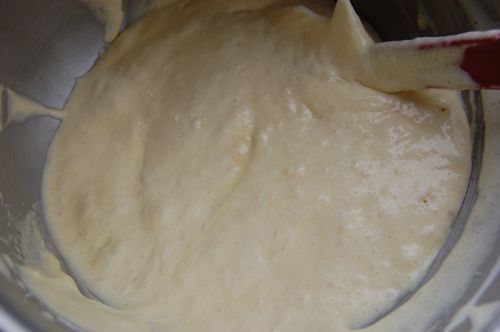
Pour the batter into your prepared pan:
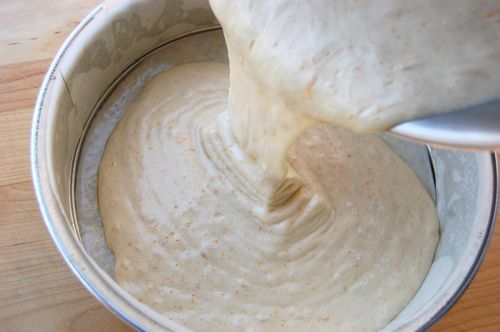
And bake for about 30 minutes until the cake is firm and golden on top.
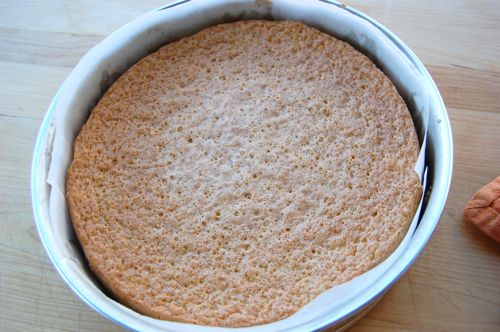
Cool the cake in the pan for ten minutes, then turn it out onto a wire rack to cool completely, about half an hour.
My cake did not rise to the extent that yours did but it was an error on my end. I did not get a “thick ribbon” when I beat together my eggs and sugar.
As of this writing, I am waiting for side 1 of the cake to absorb the first application of the “syrup.”
Hello! If the cake is denser, it will have more trouble soaking up the syrup, but it should still take up a fair amount. I’m sure it’ll still be delicious.
Hey, I like this recipe. You put almond flour so the total flour amount used would outweigh the sugar amount.
Did you use any butter or liquid fat in this recipe?
How did the cake taste without butter?